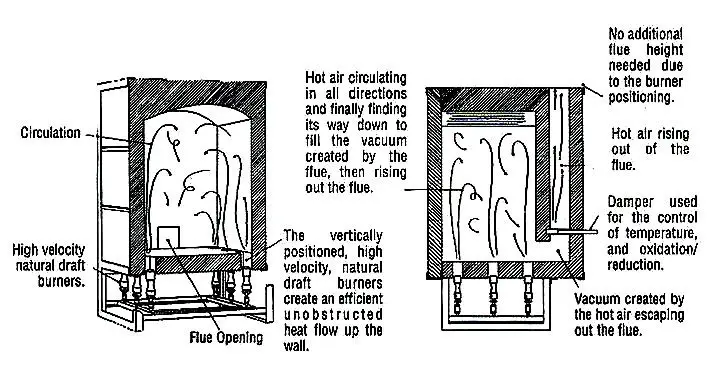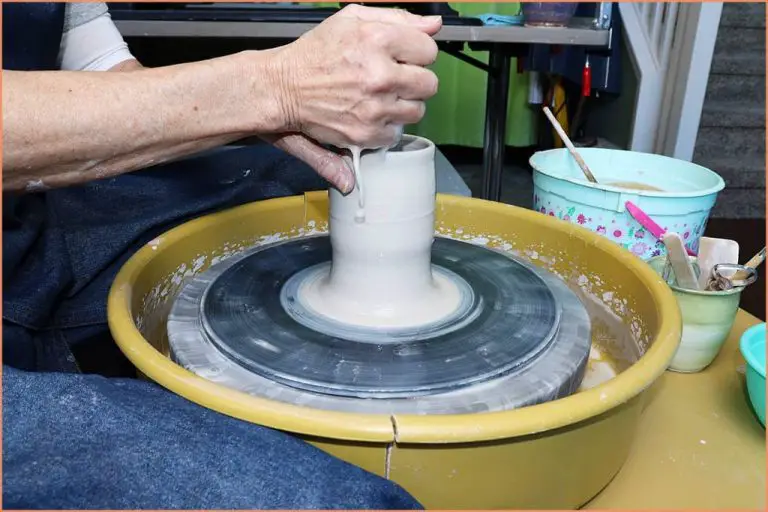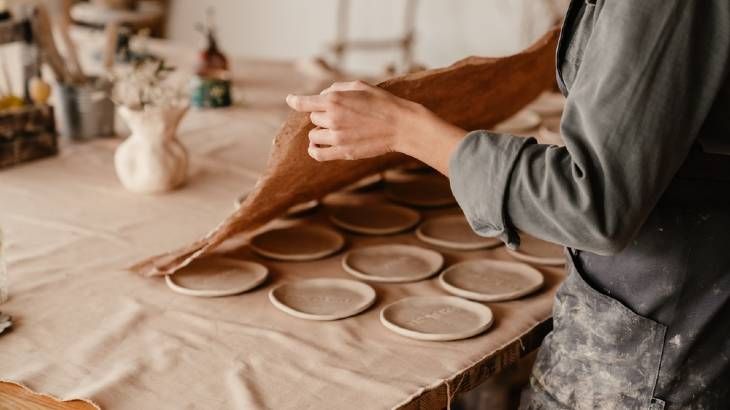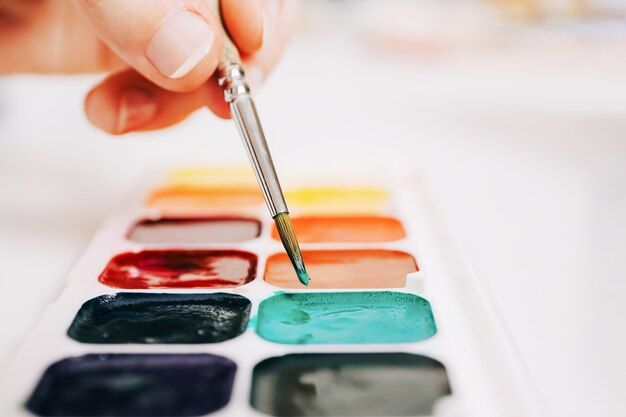How Are Clay Smoking Pipes Made?
History of Clay Pipes
The origins of clay pipes can be traced back to Native American tribes who used clay to make early smoking pipes long before the arrival of Europeans. These early pipes were made from natural clay and hardened in the sun or baked in fire pits. The practice then spread to European colonists in the 1500s and 1600s.
Clay pipes rose to widespread popularity throughout the 17th, 18th and into the 19th centuries. They were the most common way people smoked tobacco until alternative materials like briar became popular in the late 19th century. The peak of clay pipe popularity was in the Victorian era between 1837-1901.
Clay pipes declined in the early 20th century with the introduction of mass produced cigarettes and new materials like briarwood. However, they are still produced today in smaller batches for smoking enthusiasts who enjoy their traditional look and feel.
Clay Selection
The type of clay used is crucial in creating a high quality smoking pipe. Pipe makers select clay based on factors like plasticity, firing temperature, color, and texture. Some of the most common clays used include:
Earthenware – This clay contains high levels of iron and magnesium, giving it a red or brown color when fired. Earthenware is less plastic than other clays, but provides pipes with durability and absorbency.
Stoneware – Denser and less porous than earthenware, stoneware clays are highly plastic and withstand high firing temperatures. They produce pipes with low absorbency and resistance to thermal shock.
Ball clay – Pipe makers blend ball clay with other clays to increase plasticity and strength. Ball clays help reduce cracking and warping.
Kaolin – Also known as china clay, kaolin has white firing color that creates a smooth pipe surface. It is added to clay bodies for increased workability.
In addition to clay type, factors like grog content, firing temperature, and mineral content allow pipe makers to achieve the texture, durability, absorbency and color desired for quality smoking pipes.
Shaping the Pipe
There are several methods used to shape the clay into a pipe form. The most common are using molds, throwing on a potter’s wheel, and hand shaping.
For mold shaping, two-piece plaster molds are commonly used. The moist clay is pressed into the mold cavity to take on the precise shape. Excess clay is trimmed off and the molded pipe form is removed. This allows efficient mass production of identically shaped pipes.
On the potter’s wheel, a lump of clay is centered and opened up. The inside is shaped into the pipe bowl, while the outside is shaped into the stem. This method allows asymmetrical and unique shaping with the hands of an experienced thrower. The bowl and stem are typically joined together while the clay is still soft and flexible.
Hand shaping is the most traditional method, though time consuming. The clay is hand rolled and pinched into the desired pipe form entirely by hand. This method is uncommon today except for artisan pipe makers creating one-of-a-kind designs.
For the bowl, the appropriate shape and size is formed by the chosen method. Figure-eight shapes, ovals, and rounds are common bowl shapes. The bowl is typically wider at the top and tapers down to the stem. An adequate thickness should remain to prevent cracking or breaking when smoked.
Decorating
Much of the charm and collectability of clay pipes comes from the decorative techniques used to embellish them. Regional styles emerged over time, making pipes as much folk art as functional items.
Common decorative techniques included:
- Incising – using small tools to scratch designs directly into the clay surface
- Stamping – pressing carved wooden or metal stamps into the clay to leave an impression
- Molding – shaping clay into decorative forms like figures or animals using molds
- Glazing – painting colorful glazes onto the pipe surface before firing
- Gilding – applying gold leaf accents after firing
Regional pipe decoration styles were influenced by local aesthetics and artisans. For example, Dutch pipes often featured intricately molded bowls formed into figurative shapes like animals or people. English pipes were frequently stamped with simple fleur-de-lis designs. American colonial pipe bowls might display stamped names, dates, symbols, or shapes like pineapples that reflected early American culture.
The stem and shank also offered areas for decoration. Makers would carve complex geometric or foliate designs into the end of the stem. On fancy pipes, decorative silver or bone ferrules were added to cover the junction of stem and shank.
Drying Process
Proper drying is a crucial step in pipe making. After pipes are shaped, they contain a high amount of moisture from the clay. This moisture must be slowly evaporated to avoid cracking or warping the pipe. Controlled drying allows the clay particles to align themselves properly as the water recedes.
Clay pipes are dried in a specially designed drying room or chamber. Temperature, humidity, and airflow are precisely regulated to remove moisture at the proper pace. Typical drying times range from several days up to two weeks depending on factors like pipe size, clay thickness, and desired dryness level. Larger pipes require longer drying cycles. The drying process may be periodically paused to allow moisture to equalize within the clay body.
Monitoring progress during drying allows pipe makers to catch any emerging defects early. If drying happens too rapidly, cracks or irregular shapes can form. With careful moisture control, the end result is a dry, stable pipe ready for the firing process.
Firing
Firing is one of the most important steps in creating a clay smoking pipe. This process hardens the clay and sets the shape and color of the finished pipe. There are several key aspects of firing clay pipes:
Kiln Types – Clay pipes can be fired in a variety of kilns, including electric, natural gas, wood-burning, or more traditional clamp kilns. Electric kilns allow the most precise control over temperatures. Gas and wood kilns require more skill but can impart interesting effects on the final pipe.
Firing Temperatures – Most clay pipes are fired between 1800-2100°F. Lower temperatures may not fully harden the pipe. Higher temperatures cause more shrinkage and may damage the pipe shape. Fast firing is best to fully harden the pipe before the body warps.
Effects on the Clay – Firing causes clay to vitrify, hardening it into a permanent shape. The raw clay colors also change – iron impurities cause the clay to turn red, while firing in a reducing atmosphere can turn clay black. Controlled cooling after firing prevents cracks and warping.
Stem Creation
The stems of clay pipes are made separately from the bowl and attached after both pieces are fired. Traditionally, stems were made from wood, bone, or ivory. Wood stems came from dense, durable hardwoods like ebony that could withstand repeated contact with heat. Bone and ivory stems were made from animal parts and turned on a lathe to achieve a tapered tube shape.
Today, most clay pipe stems are made from plastic or acrylic. These modern materials are inexpensive, easy to work with, and can be manufactured to precise sizes and shapes. Plastic stems also offer more consistency than their organic counterparts.
To attach the stem, one end is inserted into a pre-drilled hole in the pipe bowl. Friction and compression keep the joint secure. Some pipe makers also use adhesives like resins or epoxy at the stem-bowl connection. When cooled and set, the adhesive bonds the stem and bowl together into a finished piece.
Quality Control
Quality control is an essential part of the clay pipe making process to ensure that only the highest quality pipes reach customers. Once the clay pipes are shaped, decorated and fired, they undergo rigorous quality control testing before being approved for sale.
The quality control team thoroughly examines each pipe visually and physically to check for any flaws or defects. Common flaws that testers look for include cracks, chips, uneven walls, clogged airways, and issues with the stem and mouthpiece attachment. Pipes are tested to ensure they draw air smoothly when smoked. Testers also examine the decorations and glazing for any imperfections.
If any flaws are identified, the quality team troubleshoots the issue to determine the cause. This may involve examining the clay batch, decorating materials, firing conditions, or handling procedures. The goal is to isolate the issue and correct it to prevent more defective pipes from being produced. Comprehensive quality control testing ensures only structurally sound, properly functioning pipes reach the customer.
Branding and Packaging
Once the clay pipes are complete, manufacturers add branding elements like logos, stamps, and other markings. These markings identify the pipe maker and are stamped into the pipe during production.
The earliest clay pipes often had simple markings with the pipe maker’s initials or location. Over time, logos and branding became more elaborate. Some companies created intricate stamps that became synonymous with their brand.
Along with logos, many clay pipe makers added hallmarks to their pipes. These markings indicated the pipe’s quality or material. Hallmarks also served as a form of consumer protection, assuring buyers of the pipe’s authenticity.
For packaging, clay pipes are carefully wrapped and boxed to prevent breakage during transport. Decorative labels and branding are added to the packaging to attract buyers. Historically, clay pipes were sold in specialized pipe shops. Today, they can still be found in cigar shops, head shops, antique stores, and online retailers.
Attractive, branded packaging allows manufacturers to charge premium prices for high-end collectible pipes. For inexpensive bulk orders, simple cardboard boxes or bags are used.
Modern Production
In today’s market, most clay pipes are mass produced in factories rather than by hand. Major manufacturers like Missouri Meerschaum and S.M. Frank dominate the industry with large production facilities able to churn out thousands of pipes daily. While historically pipe making was a painstaking craft, modern methods allow for faster, higher volume production. Sophisticated machines now form the pipes, apply decorative patterns, and add stems. Quality control and testing ensure consistency across production runs.
Despite factory production being the norm, there are still some artisans producing pipes by hand, though on a much smaller scale. These handmade pipes are more unique, but cost much more compared to mass manufactured pipes. Overall, factory production has made clay pipes more affordable and widely available.
The global clay pipe market continues to grow, largely driven by demand in Europe and North America. Smokers appreciate the cool, dry smoking experience of a clay pipe. While the market declined in the late 20th century, it has rebounded as pipes remain popular among traditionalists and hobbyists.




